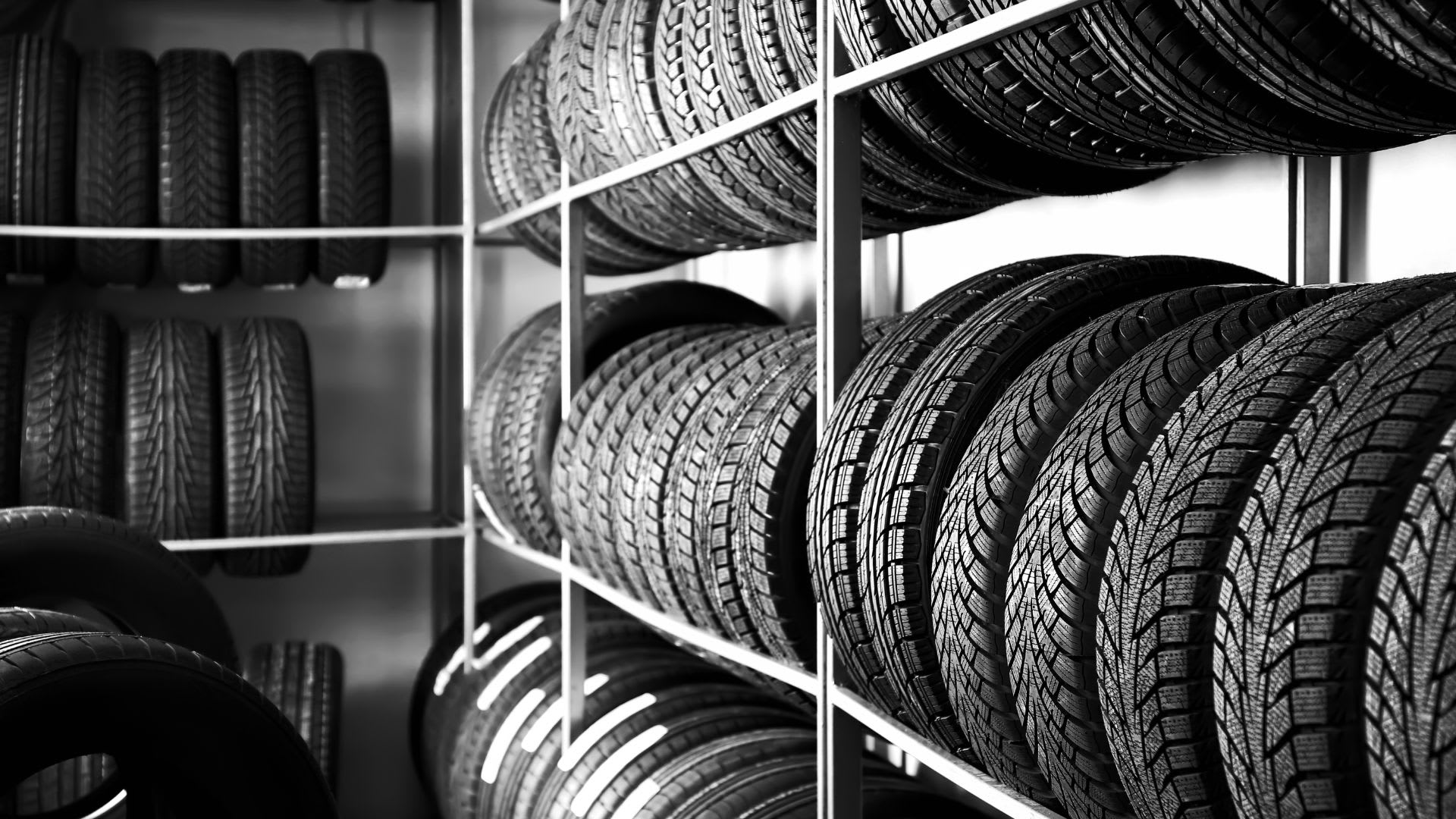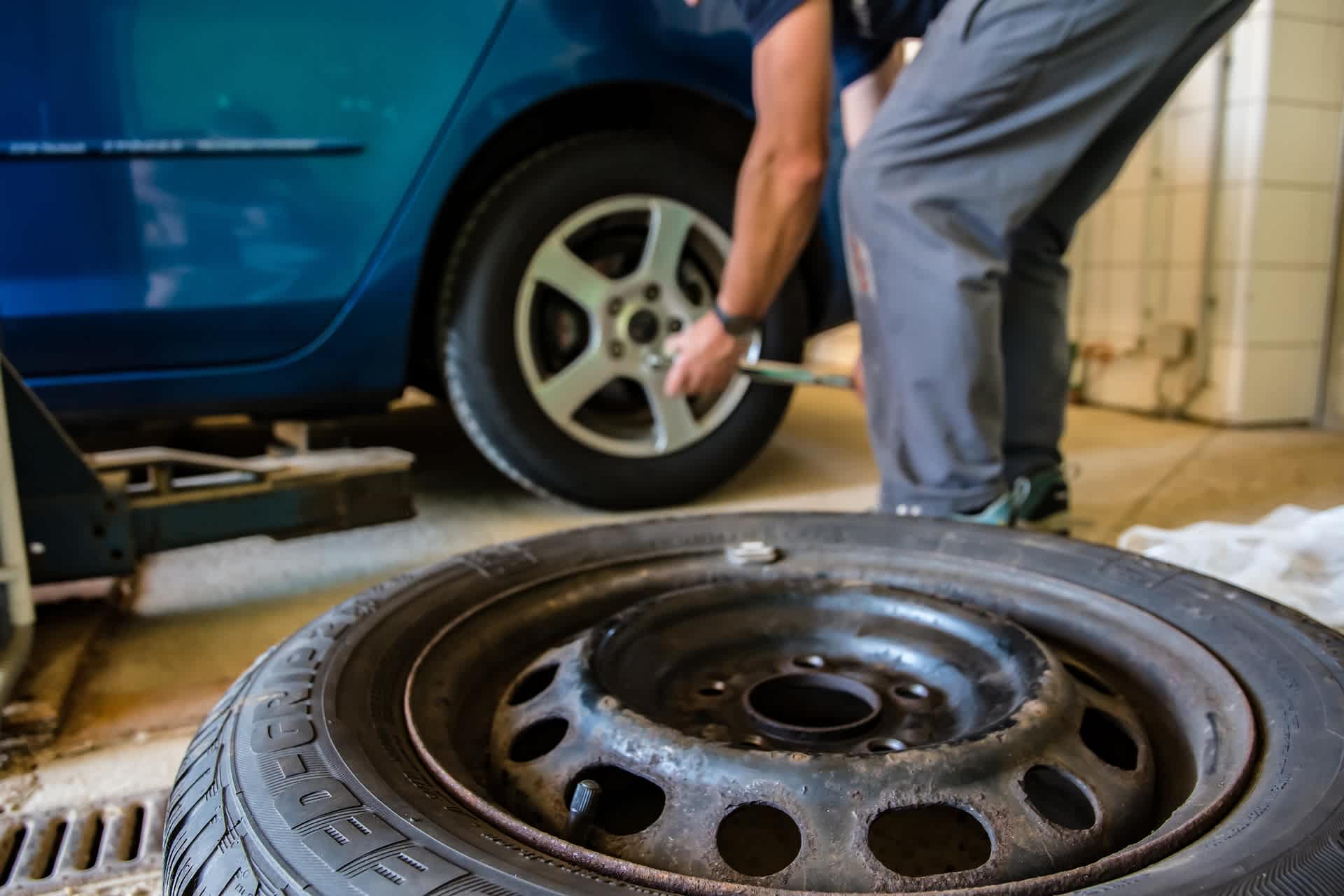Tire maintenance & safety
Free shipping
Best price guarantee
Special pricing
Financing with Resolve
Easy returns

Tires are the only point of contact between your vehicle and the road, making them crucial for safety and performance. Over time, tire tread wears down, reducing traction, handling, and the ability to stop effectively.
Regularly monitoring tire condition helps prevent unexpected flats and accidents caused by worn-out tires. Knowing when to replace your tires can save you money in the long run by avoiding costly repairs and improving fuel efficiency.
This guide will help you understand the signs indicating it's time for new tires and provide expert advice on optimal replacement timing. By following these tips, you can ensure your vehicle remains safe and reliable on the road.
What is Tire Replacement Timing?

Tire replacement timing refers to the ideal point at which you should install new tires on your vehicle. This timing is influenced by factors such as tread depth, age, and overall condition of the tires. Determining the right moment for tire replacement is essential for maintaining optimal safety, performance, and efficiency.
Waiting too long to replace tires can lead to decreased traction, especially in wet or slippery conditions, and may result in hydroplaning or longer stopping distances. Worn tires are also more prone to punctures and blowouts, which can be dangerous and leave you stranded on the side of the road.
On the other hand, replacing tires too early can be an unnecessary expense. Tires are a significant investment, and maximizing their lifespan while ensuring safety is key. By understanding the signs of wear and following guidelines for replacement, you can strike the perfect balance between cost and safety—ultimately getting the most value out of your tire investment.
How to Identify When to Get New Tires
To determine when it's time for new tires, it's crucial to perform regular inspections and be aware of the warning signs. Here are some key ways to identify when tire replacement is necessary:
Visual Inspection
- Examine the tire tread for signs of uneven wear, such as bald spots or sawtooth edges, which can indicate alignment or suspension issues.
- Check for visible damage, including cuts, punctures, or bulges on the sidewall, as these can compromise tire integrity and lead to blowouts.
- Look for embedded objects like nails or debris that could cause slow leaks or sudden flats.
Tread Depth Check
- Use a tread depth gauge or the penny test (explained in the next section) to measure the remaining tread.
- Ensure the tread depth is above the legal minimum of 2/32 inches for safe operation.
- Consider replacing tires before they reach the minimum depth for optimal performance, especially in wet or winter conditions.
Age and Mileage
- Check the tire's manufacturing date, which is indicated by the DOT code on the sidewall. Tires older than six years should be inspected by a professional and considered for replacement.
- Keep track of the mileage on your tires. Most tires are designed to last between 25,000 to 50,000 miles, depending on the type and brand.
By conducting these checks regularly and staying alert for signs of wear, you can proactively address tire issues and know when it's time to start shopping for replacements. Retailers like SimpleTire offer a wide selection of high-quality tires to fit your vehicle and driving needs.
1. Check Tire Tread Depth
Tread depth is one of the most important factors in determining when to replace your tires. Adequate tread is essential for maintaining traction, especially in wet or slippery conditions. Here's how to check your tire tread depth:
The Penny Test
- Take a penny and insert it into the tire tread with Lincoln's head facing down.
- If you can see the top of Lincoln's head, your tread depth is less than 2/32 inches, and it's time to replace your tires.
- Repeat this test at several points around the tire and on all four tires to ensure even wear.
Tread Wear Indicators
- Look for the raised bars built into the tire tread, known as wear bars.
- When the tread is worn down to the level of these bars (2/32 inches), it's time for new tires.
- Wear bars are located at regular intervals around the tire and become more visible as the tread wears down.
While the legal minimum tread depth is 2/32 inches, many experts recommend replacing tires earlier for optimal safety and performance. Tires with 4/32 inches of tread or less may not provide sufficient traction in wet weather and can increase the risk of hydroplaning.
2. Recognize Tire Replacement Signs
In addition to monitoring tread depth, there are other signs that indicate it's time for new tires. Keep an eye out for the following:
Sidewall Damage
- Inspect the sidewalls of your tires for cuts, cracks, or bulges.
- These issues can weaken the tire's structure and lead to sudden failure or blowouts.
- If you spot any sidewall damage, have a professional assess the tire and replace it if necessary.
Vibration or Shaking
- If you experience unusual vibration or shaking while driving, especially at high speeds, it could be a sign of tire issues.
- Uneven wear, internal damage, or balance problems can cause these sensations.
- Have your tires inspected and replaced if the issue persists after balancing and alignment.
Excessive Tread Wear
- Check for signs of uneven or rapid tread wear, such as bald spots or exposed steel belts.
- Uneven wear can be caused by improper inflation, alignment issues, or suspension problems.
- Address the underlying cause and replace the tires to prevent further damage and ensure safe operation.
By being proactive and addressing these signs early, you can avoid more serious tire failures and maintain optimal vehicle performance. Regular tire rotations and alignment checks can also help extend the life of your tires and promote even wear.
3. Understand Tire Age Guidelines
Even if your tires appear to have sufficient tread, age is another crucial factor to consider when determining replacement timing. Here are some guidelines for assessing tire age:
Six-Year Rule
- Tires are generally considered to have a lifespan of six years from the date of manufacture, regardless of tread depth.
- The rubber compounds in tires can degrade over time due to exposure to heat, sunlight, and other environmental factors.
- Have your tires inspected annually after six years and consider replacement for optimal safety.
Ten-Year Maximum
- Tires that are ten years old or more should be replaced, even if they appear to be in good condition.
- The risk of sudden failure increases significantly with age, as the tire's internal structure and rubber components deteriorate.
- This guideline applies to spare tires as well, which are often overlooked but can be just as critical in an emergency.
To determine the age of your tires, locate the DOT code on the sidewall. The last four digits indicate the week and year of manufacture. For example, a code ending in "2219" means the tire was produced in the 22nd week of 2019.
Keep in mind that age guidelines are just one factor to consider, and tires may need replacement sooner based on wear, damage, or other conditions. Regular inspections and adherence to manufacturer recommendations can help ensure your tires remain safe and reliable throughout their lifespan.
By understanding tire replacement timing and the signs that indicate new tires are needed, you can make informed decisions about when to invest in fresh rubber. Prioritizing tire maintenance and replacement not only enhances safety but also optimizes vehicle performance and efficiency. With a proactive approach and attention to detail, you can enjoy a smoother, safer ride while getting the most value from your tire investment.
How to Identify When to Get New Tires
Keeping a consistent schedule for checking your tires is vital for ensuring they remain in top condition. By routinely evaluating their state, you can prevent minor issues from becoming major concerns, safeguarding both your safety and your vehicle's performance.
Comprehensive Visual Checks
When inspecting your tires, consider more than just the surface. Thoroughly check for any signs of wear or damage across all parts of the tire, including the sidewalls. Utilize reliable methods, such as the penny test, to measure tread depth, ensuring your tires meet safety standards. Note any unusual wear patterns that may suggest underlying problems with your vehicle's alignment or suspension.
Following Expert Advice on Timing

Expert recommendations can guide you on the best times to replace your tires, taking into account various factors. Conditions such as driving environment and personal driving habits can significantly influence tire wear. Consulting with tire professionals can provide personalized advice, helping you determine the most effective schedule for tire replacement to maintain optimal safety and performance.
1. Check Tire Tread Depth
Assessing tire tread depth is crucial for maintaining safety and performance on the road. Proper tread depth ensures your tires can effectively grip the road surface, channel water away, and provide the needed traction for safe driving, especially in adverse weather conditions. An alternative method to evaluate tread depth involves using a tread depth gauge for precise measurements. This tool can help identify when the tire tread is approaching a critical level and requires replacement.
It's important to maintain a tread depth that exceeds the minimum requirements set for safe driving. For enhanced safety, consider replacing tires when the tread reaches 4/32 inches, as this can improve traction on wet surfaces and reduce the risk of hydroplaning. Consistent monitoring of tread depth allows you to track wear patterns over time, helping you plan for replacements proactively and avoid unexpected issues on the road.
In addition to using a gauge, visual inspections should focus on identifying any signs of uneven wear or damage. Tread wear indicators, often small raised sections within the tread grooves, can serve as helpful guides. By regularly examining these indicators, you can gauge when the tire's performance may be compromised and take timely action to ensure continued road safety.
2. Recognize Tire Replacement Signs
Identifying the signs that indicate the need for new tires is key to maintaining vehicle safety and performance. Paying attention to the tread surface can reveal essential clues. As tires wear down, the smoothness of the tread can indicate reduced traction and grip, signaling the need for replacement. This ensures you maintain control and safety when driving.
Beyond the tread, evaluating the tire's overall shape is crucial. Check for any unevenness or deformities along the tire's surface, which could indicate internal problems such as broken belts. These irregularities can compromise the tire's structural integrity, potentially leading to unsafe driving conditions. Regular assessments help pinpoint these issues early, allowing you to address them before they escalate.
Performance changes also provide important insights into tire health. If you notice a change in handling or an increase in road noise, these could be signs of tire wear or imbalance. Such symptoms, especially when persistent, suggest it's time to consult a professional for further inspection and possible tire replacement. Keeping a close watch on these indicators ensures your vehicle remains reliable and safe on the road.
3. Understand Tire Age Guidelines
Evaluating tire age is crucial when deciding on replacement, as aging can affect safety and performance. Beyond tread condition, factors like climate and storage can influence a tire's lifespan. By understanding these elements, you can ensure your tires remain reliable.
Key Influences on Tire Aging
- Weather Conditions: Prolonged exposure to harsh weather—such as intense sunlight, extreme temperatures, and moisture—can accelerate the aging process of tires. These conditions may cause the rubber to become brittle and less effective over time. To protect your tires, park in sheltered areas or use protective covers when possible.
- Storage Practices: Proper storage is vital for minimizing tire aging. Tires kept in stable environments away from direct sunlight and moisture tend to last longer. If storing tires for extended periods, ensure they are placed in a cool, dry location to preserve their integrity.
Recommended Replacement Intervals
- Regular Inspection After Six Years: Begin thorough checks once tires reach six years from the manufacturer's date. Look for signs of aging, such as surface cracks or hardening, and consult a professional for an assessment to verify their condition.
- Ten-Year Maximum Lifespan: Replace any tire that has reached the ten-year mark, regardless of its external appearance or tread depth. This rule includes spare tires, which might not show wear but are still subject to aging processes.
By recognizing how external factors and proper care influence tire aging, you can make informed decisions about when to replace them. Following these guidelines ensures that your tires maintain their effectiveness and contribute to a safer driving experience.

By staying informed about tire replacement signs and guidelines, you can make proactive decisions that prioritize your safety and vehicle performance. When the time comes for new tires, consider shopping online for a convenient and cost-effective solution. At SimpleTire, we offer a wide selection of high-quality tires and expert guidance to help you find the perfect set for your vehicle—shop for tires online and discover the best deals today.
Ready to find the perfect tires?
Search By